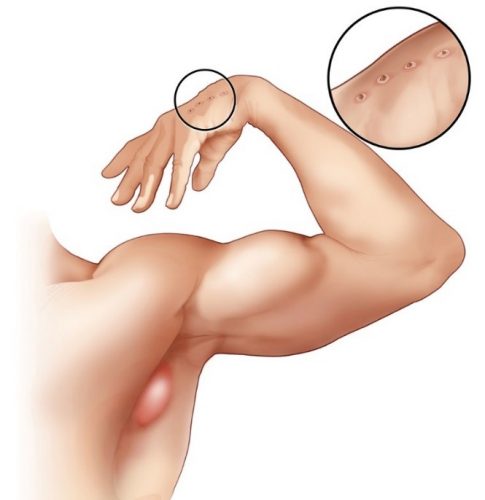Cat Scratch Disease
Report a Case
Disease Reporting Line:
(808) 586-4586
About This Disease
Cat-scratch disease (CSD) is an uncommon illness that can be transmitted to people by cats. The agent that causes cat-scratch disease is a rickettsial (bacteria-like) organism called Bartonella henselae. Infected cats can transmit the illness to people even if the cats do not show any signs or symptoms of illness. Kittens younger than one are more likely to carry B. henselae. Approximately 40% of the cat population carry B. henselae.
Signs and Symptoms
At first, the scratch or bite will be red and sore, but without pus. The wound later changes to a blister-like sore that breaks open. The sore then dries out and heals in 1 to 3 weeks. Within 2 weeks of being scratched, the lymph nodes closest to the site of the scratch may become swollen. Fever is usually present. Other symptoms include fatigue, loss of appetite, weakness, chills, aches, and a general feeling of being ill.
The symptoms usually begin 3 to 14 days after being scratched or bitten by an infected cat.
Transmission
You can get cat-scratch disease when infected cats (usually kittens) bite or scratch the handler. You can also get it when an infected cat licks an open scrape or wound.
Diagnosis
At first, the scratch or bite will be red and sore, but without pus. The wound later changes to a blister-like sore that breaks open. The sore then dries out and heals in 1 to 3 weeks. Within 2 weeks of being scratched, the lymph nodes closest to the site of the scratch may become swollen. Fever is usually present. Other symptoms include fatigue, loss of appetite, weakness, chills, aches, and a general feeling of being ill.

Swollen lymph node in the armpit and cat scratch on hand
Contact your physician if you have a wound from a cat and you suspect you have cat scratch fever. People are only tested for CSD when the disease is severe and when the physician suspects the symptoms meet the criteria. Your physician can order tests to determine if you have CSD. Your veterinarian can tell you if your cat should be tested.
Treatment
The illness in people is not usually serious. Most cases resolve on their own without treatment in 2 to 3 months. However, in more severe or recurring infections, complications can occur and a doctor can prescribe antibiotics to treat the disease.
Risk in Hawaii
Risk of cat scratch fever is possible for people who have contact with kittens or cats that are infected with the bacteria.
Prevention
Take measures to limit a pet cat’s exposure to the organism, such as by keeping cats indoors and using measures to control fleas;
- Reduce contact with kittens and activities that may result in scratches or bites.
- Promptly cleanse any minor cat scratches or bites with soap and water immediately.
- For more severe wounds, consult your doctor.
- Wash your hands with soap and water after playing with cats
- Apply flea products approved by your veterinarian to your cats on the recommended schedule
- Vacuum your house frequently
- Use pest-control company if necessary
- Keep your cats nails trimmed
- Keep cats indoors
Do not:
- Play rough with your pets because they may scratch and bite.
- Allow cats to lick your open wounds.
- Pet or touch stray or feral cats.
Information for Clinicians
For Healthcare Providers – Bartonella Infection (Cat Scratch Disease, Trench Fever, and Carrión’s Disease) | CDC
For Veterinarians – Bartonella Infection (Cat Scratch Disease, Trench Fever, and Carrión’s Disease) | CDC
Last Reviewed: June 2024

